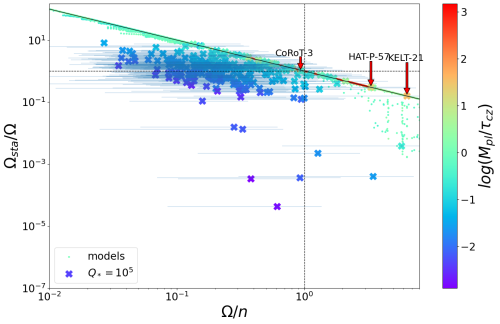
In a study published in Monthly Notices of the Royal Astronomical Society, Ph.D. candidate GUO Shuaishuai at the Yunnan Observatories of the Chinese Academy of Sciences, and the collaborators, focusing on the phase in the evolution of hot Jupiters around stars where a long-term synchronization phenomenon occurs between the stellar rotation rate and the planetary orbital rate, proposed evolutionary mechanism for long-term double synchronization in hot Jupiter systems.
Astronomers have discovered extremely massive hot Jupiters and brown dwarfs near certain types of stars. The presence of synchronized orbits can significantly slow down the tidal evolution of planetary systems and extend the lifespan of planets. Observational evidence suggests that close companions around F-type stars may have larger masses than those around lower-mass host stars. This is consistent with theoretical simulations.
In this study, researchers combined stellar evolution with tidal interactions in star-planet systems. They found that when massive close-in planets orbiting stars larger than the Sun or with lower metallicity rotate around their host stars, it is more likely to occur double synchronization. Double synchronization occurs when the stellar rotation rate synchronizes with the planetary orbital rate.
Besides, researchers examined a sample of 243 hot Jupiters and brown dwarf systems with relatively complete observational parameters orbiting F and G-type stars. The results indicated that the CoRoT-3 system may currently be in a state of long-term double synchronization, while the HAT-P-57 and KELT-21 systems may reach this state in the future as they evolve.
This work provides theoretical constraints for identifying observational samples that are in a state of double synchronization.

The current evolutionary state of 243 observed systems. When a system is located above the solid line in the diagram, long-term double synchronization can be maintained. (Image by GUO Shuaishuai)

86-10-68597521 (day)
86-10-68597289 (night)

52 Sanlihe Rd., Xicheng District,
Beijing, China (100864)

